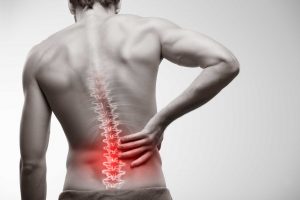The forgotten tissue issue – fascia and back pain
Back pain is one of those mysterious conditions that even the most experienced medical professionals often have no idea where it comes from and how to approach it. Even though back pain affects 8 out of 10 people our knowledge on how to deal with effectively it is shockingly limited. The standard NHS prescribed back pain treatment involves a course in NSAID painkillers (Naproxen, Ibuprofen, Paracetamol) and a sheet of take-home exercises. If it’s severe you may be send to an MRI scan, where no doubt disc protrusions or prolapse will be identified as “potentially contributing to symptoms”. After that you will be sent to a physio, and if that has no effect, a whole course of treatments will be tested on you with the controversial surgery as a last resort. I say controversial, because 40% of them are unsuccessful and the adverse effects of cutting through the body and fusing the vertebrae into an inflexible rod are irreversible.
If you are reading this then there is a possibility that you’ve tried many methods and that your back pain is related to the system of your body that is completely omitted from the NHS manuals – fascia. Fascia is a suspensory net that envelopes every muscle, bone and organ of your body, giving it shape, elasticity and resilience. It is mainly made out of collagen and it can either be very fluid (sol) or quite viscous (gel). This sol/gel state of fascia is what determines its gliding capacity. When too dry, fascia can shorten and make you feel inflexible and cause pain and muscle seizures.
This is relevant to a painful back because the entire length of it is covered with layers of fascia; in fact these layers reach far beyond the back’s surface and go as far as the soles of your feet and the top of your skull. Long hours of computer work, poor posture, stress, driving and even bad diet all can cause fascia to shorten and become a rigid gel-like structure. These restrictions then inhibit the normal bio-chemical exchange in the muscles – and voila – we have what the NHS calls non-specific back pain.
To return it to normality, the gel-like shortened fascia needs water. Unfortunately, drinking lots won’t do because the water-retaining proteins in the fascia need mechanical stimulation to irrigate themselves. Rolfing is one of the few bodywork methods that is able to manipulate fascia and stimulate it into correct functioning. During the session of Rolfing, the practitioner systematically assesses the state of the tissues and uses guided touch to bring movement and glide into the rigid areas. When working with back pain a Rolfer will usually address the entire plane of fascial layers including: feet, calves, hamstrings, neck and the skull. In my experience as a Rolfer, 80% of clients who come to me with a non-specific back pain benefit.
To return it to normality, the gel-like shortened fascia needs water. Unfortunately, drinking lots won’t do because the water-retaining proteins in the fascia need mechanical stimulation to irrigate themselves. A skilled bodyworker is able to manipulate the fascia and stimulate it into correct functioning. for best effect, the entire plane of fascial layers should be addressed, including: feet, calves, hamstrings, neck and the skull. In my experience as a Rolfer, 80% of clients who come to me with a non-specific back pain benefit from such an approach.





